The Significance Of The National Animal Of Singapore – The Asiatic Lion
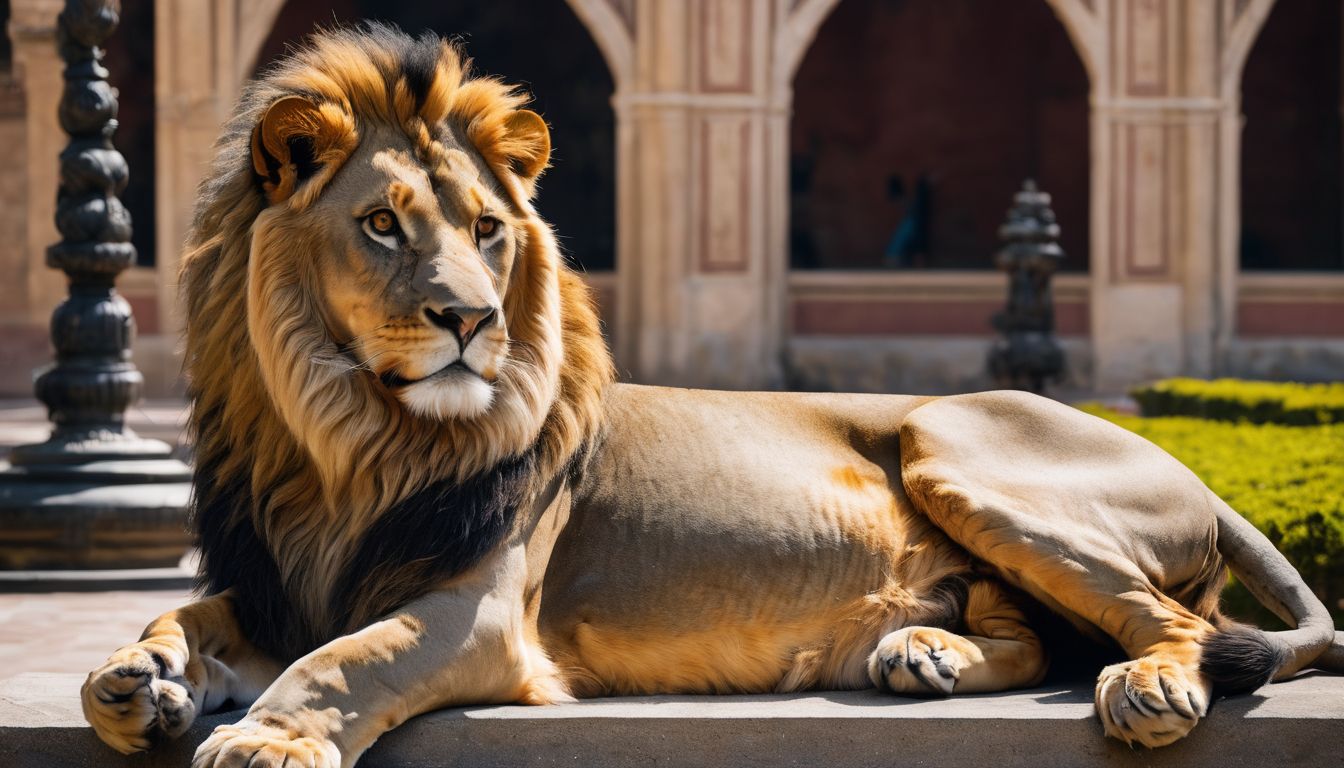 Asiatic Lion in a serene park with various people in different outfits. A photo of an elegant statue of an Asiatic Lion in a serene park with various people in different outfits.
Asiatic Lion in a serene park with various people in different outfits. A photo of an elegant statue of an Asiatic Lion in a serene park with various people in different outfits.
Ever wondered why the lion is often associated with Singapore? Believe it or not, the Asiatic Lion happens to be Singapore’s national animal. This post will dive into fascinating details about this regal creature and its significance to the culture of Singapore.
So, get ready for an exciting journey through history, symbolism, and wildlife!
The Lion Head Symbol: Origin and Meaning
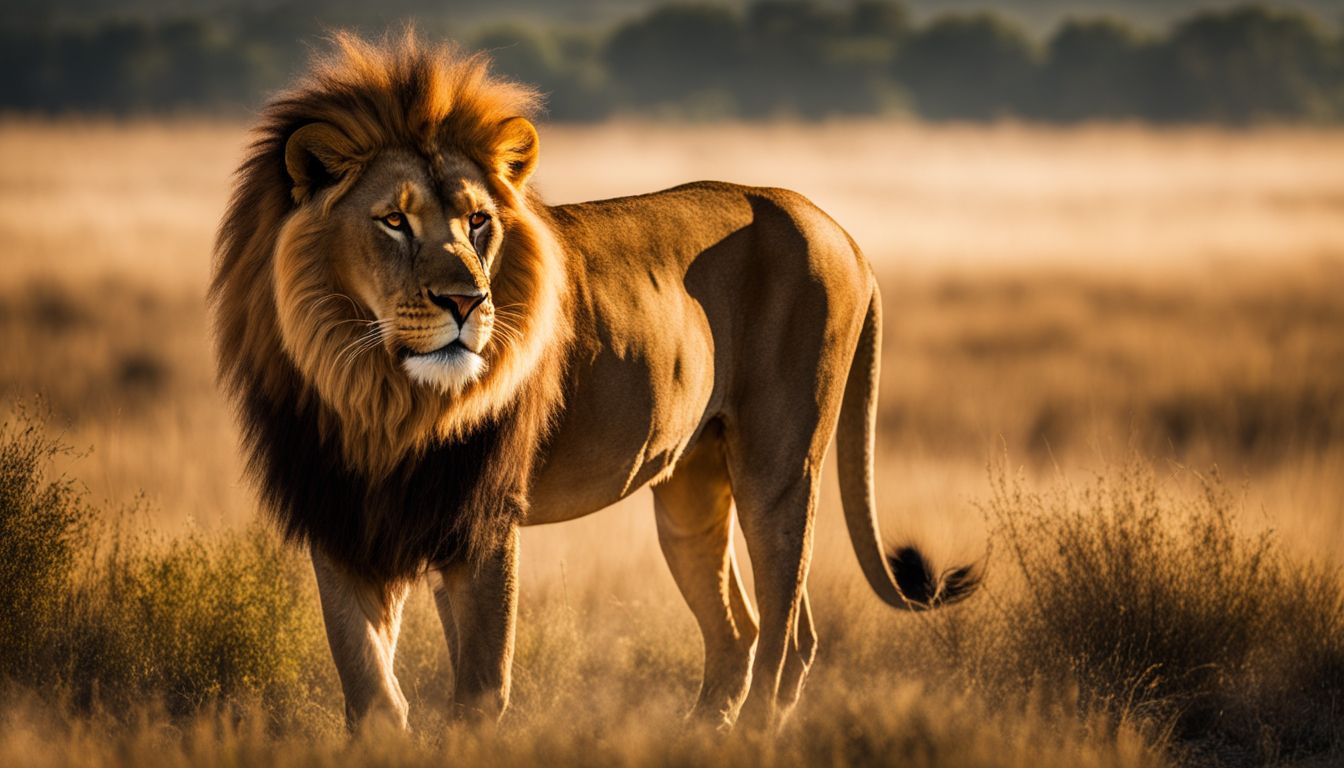
The Lion Head symbol was introduced in 1986 and it represents courage, strength, excellence, kindness, generosity, and sociality. Proper guidelines for using the symbol are available along with downloadable resources.
Introduction of the symbol in 1986

The Lion Head symbol came to life in 1986. Singapore chose this as a new national symbol. This emblem stands for the spirit of Singapore. It helps people know who we are and what matters to us.
This visual representation uses bold colors from our flag. The lion’s mane has five points, and it is all red on a white field. Our symbol shows that we have courage, strength, and goodness at heart.
Representing courage, strength, and excellence
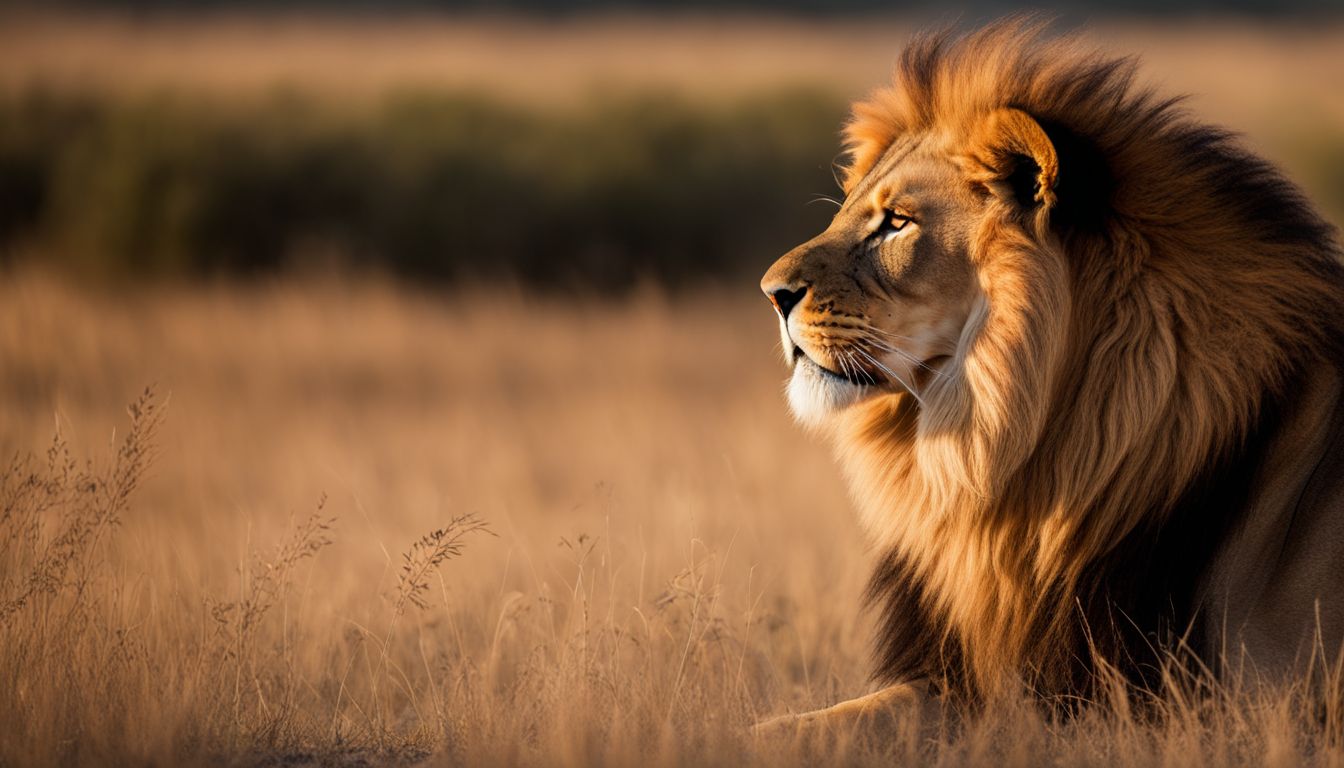
The Lion Head Symbol of Singapore stands for might and power. It shows the fearless spirit that made Singapore what it is today. This symbol will remind you to face every challenge with courage, just like a lion.
This proud beast also means greatness and excellence in all things. It tells us that we should always aim high and do our best, even when times are tough. The Asiatic lion does not back down from hard tasks, but instead faces them head-on.
Kindness, generosity, and sociality blend with ferocity in this icon too. Yes, lions are fearsome hunters but they’re also caring parents who work together in their communities called prides.
These values help bring everyone together as one community or pride under the powerful image of the lion.
Also associated with kindness, generosity, and sociality

The Lion Head is a sign of good things. It shows kindness and giving to others. The lion shares what it has and helps other lions when they need it. This makes the lion a mark of generosity.
In groups, lions act in friendly ways to each other. They show love and care for their group members like a family does. We call this sociality or being social with others.
This big cat has more than just power and strength! It also stands for warmth, friendliness, and good feelings toward others. People see the lion as showing all these nice traits, without any bad ones mixed in.
Guidelines for Using the Lion Head Symbol
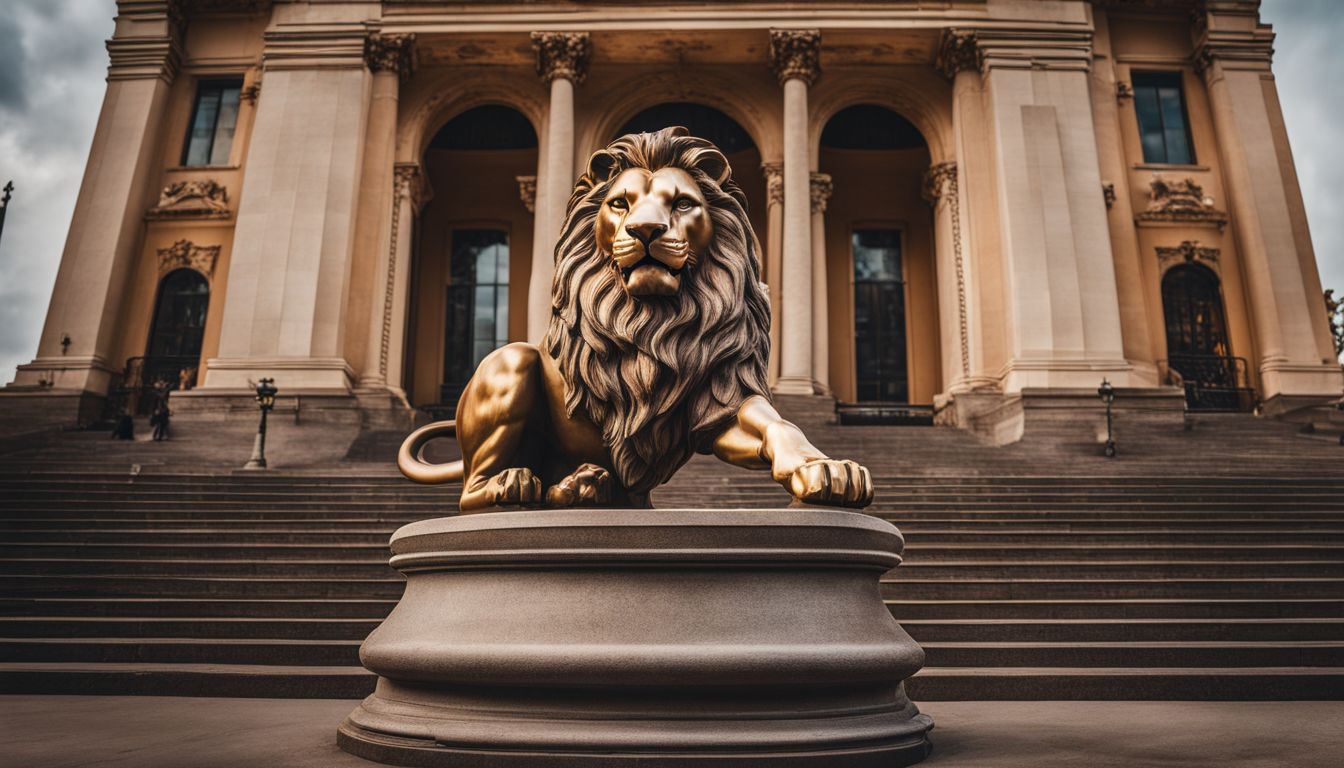
To properly display and use the lion head symbol, follow these guidelines which include information on how to showcase it and where to find downloadable resources.
How to properly display and use the symbol
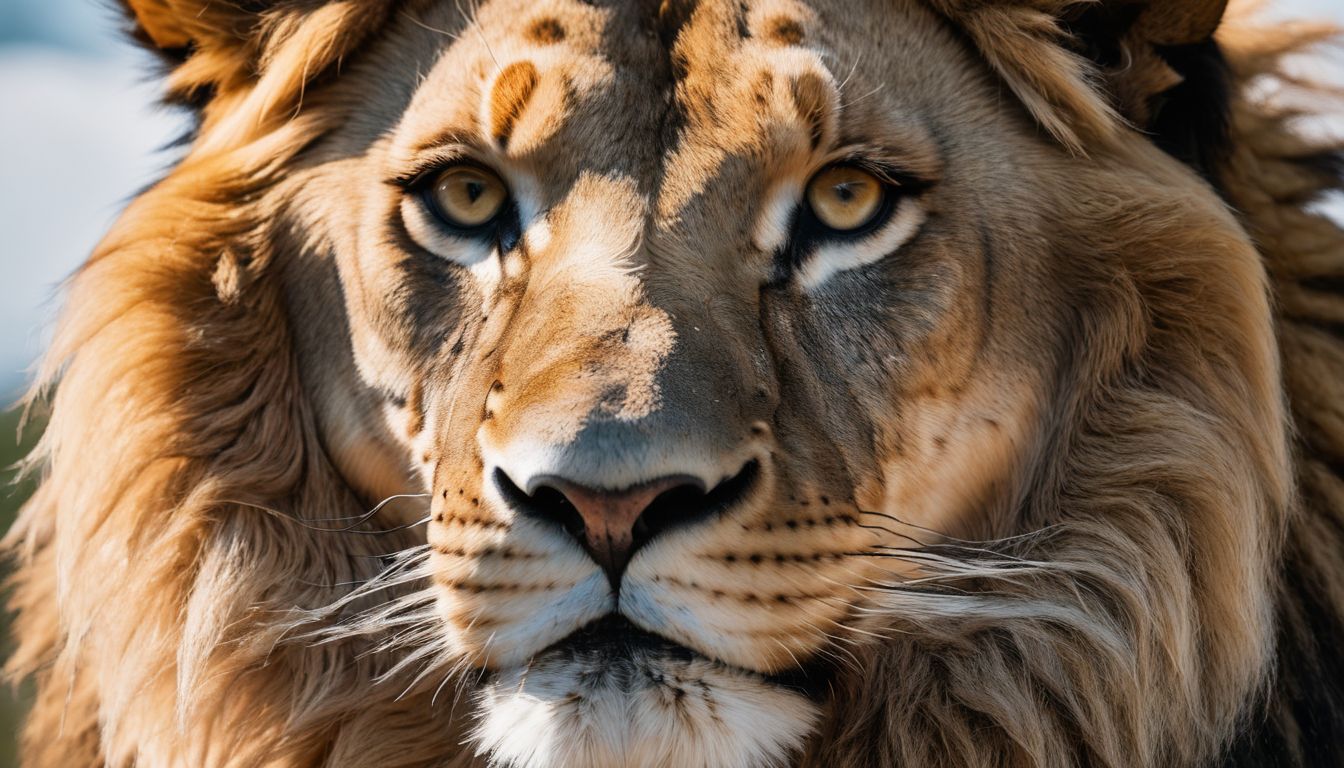
To properly display and use the lion head symbol, there are some important guidelines to follow. The symbol should be depicted accurately with the correct colors and proportions. It is set in solid red against a white background, which represents the colors of Singapore.
This ensures that the symbol is easily recognizable as a national emblem. When using the lion head symbol, it’s essential to show respect for its significance as a national symbol.
This means displaying it in a way that upholds its value and prevents misuse. Government buildings in Singapore often feature this iconic symbol, showcasing its importance in representing the nation.
Downloadable resources available

You can easily access downloadable resources that provide guidelines for using the lion head symbol in relation to the significance of the Asiatic Lion. These resources offer information on how to properly display and use the symbol, ensuring that it is used in a respectful and appropriate manner.
The downloadable resources may include templates, materials, and other helpful tools to assist you in utilizing the lion head symbol effectively. By accessing these resources, you can gain valuable insights into promoting understanding and proper usage of this important national symbol.
The availability of these downloadable resources aims to make it convenient for individuals and organizations alike to access all the necessary information regarding the lion head symbol.
The Asiatic Lion: National Animal of Singapore
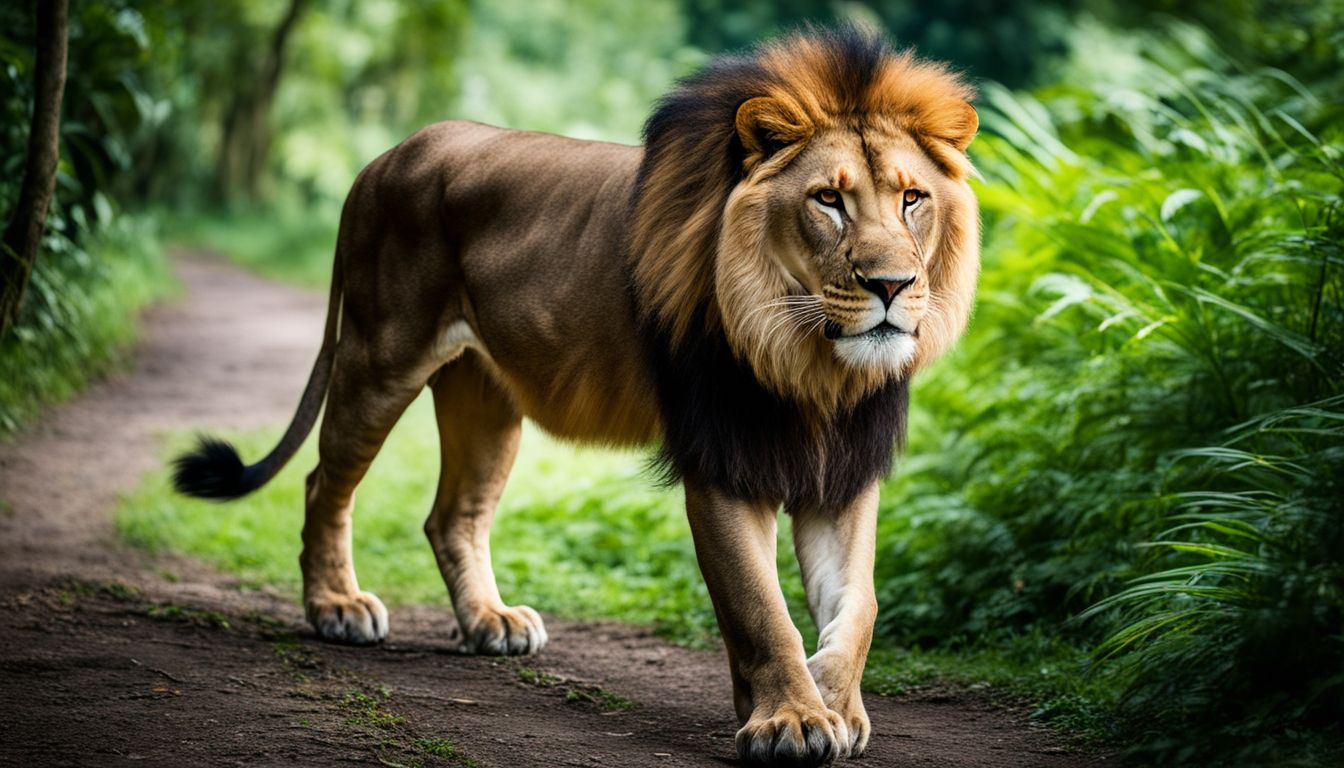
The Asiatic Lion, with its majestic presence and cultural importance, holds the esteemed title of being Singapore’s national animal.
Description and characteristics

The Asiatic Lion, the national animal of Singapore, is a majestic creature that holds great significance in Singaporean culture. These lions are slightly smaller than their African counterparts, with adult males weighing between 160 to 190 kg and females weighing between 110 to 120 kg.
They stand at an average height of around 3.6 feet at the shoulder.
Male Asiatic lions are known for being solitary animals, although they may form small groups called prides with up to three other males. These pairs of male lions often rest, hunt, and feed together.
Asiatic lions also display marking behaviors to establish their territories and communicate with others.
With its distinctive appearance and powerful presence, the Asiatic Lion represents courage, strength, and excellence – qualities that are highly valued in Singaporean culture. Its status as the national animal further solidifies its importance in Singapore’s identity and heritage.
Importance to Singaporean culture
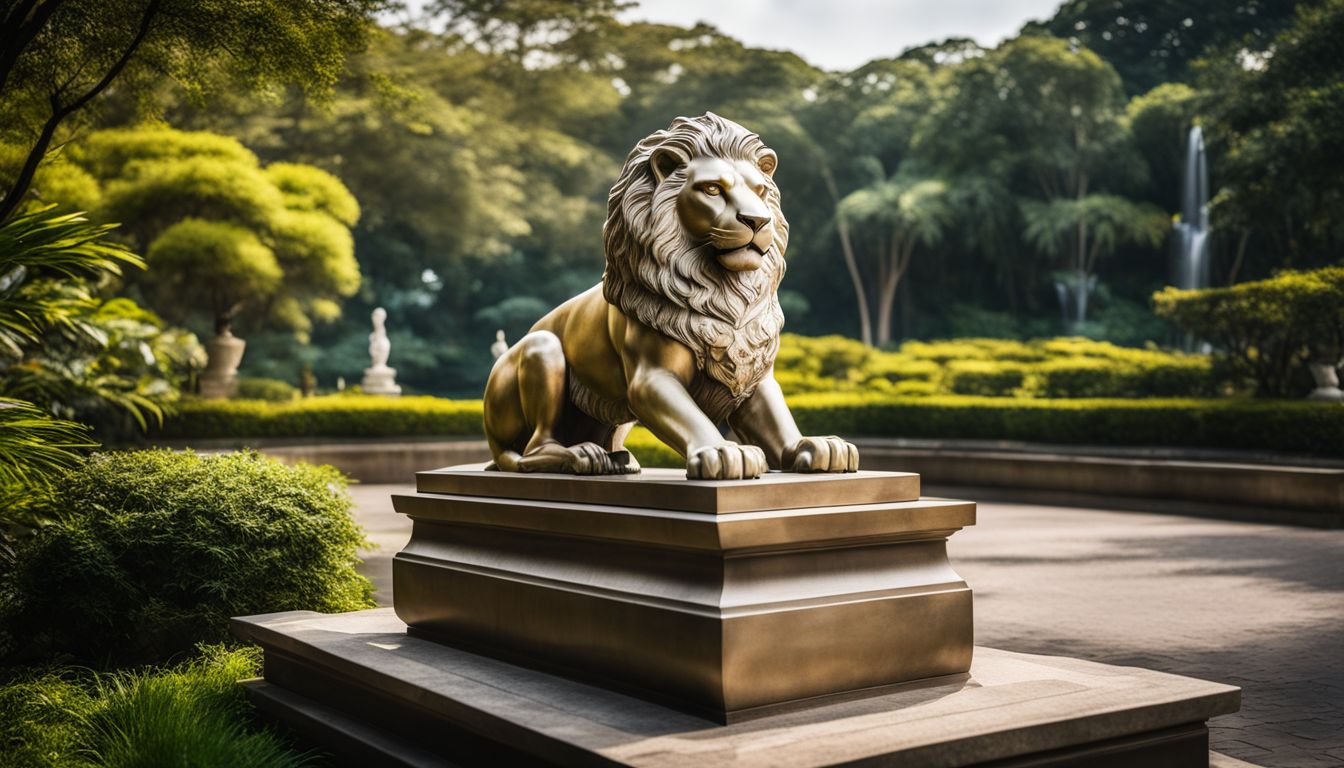
The Asiatic Lion holds great importance in Singaporean culture. As the national animal, it symbolizes courage, strength, and excellence. It is also associated with kindness, generosity, and sociality.
The lion represents the origins of Singapore as a fishing village and its transformation into a prosperous city. This powerful symbol is often featured in artwork such as sculptures, paintings, and traditional crafts.
For Singaporeans, the lion embodies their national pride and plays a significant role in showcasing their identity and heritage.
Where Does the Asiatic Lion Live?
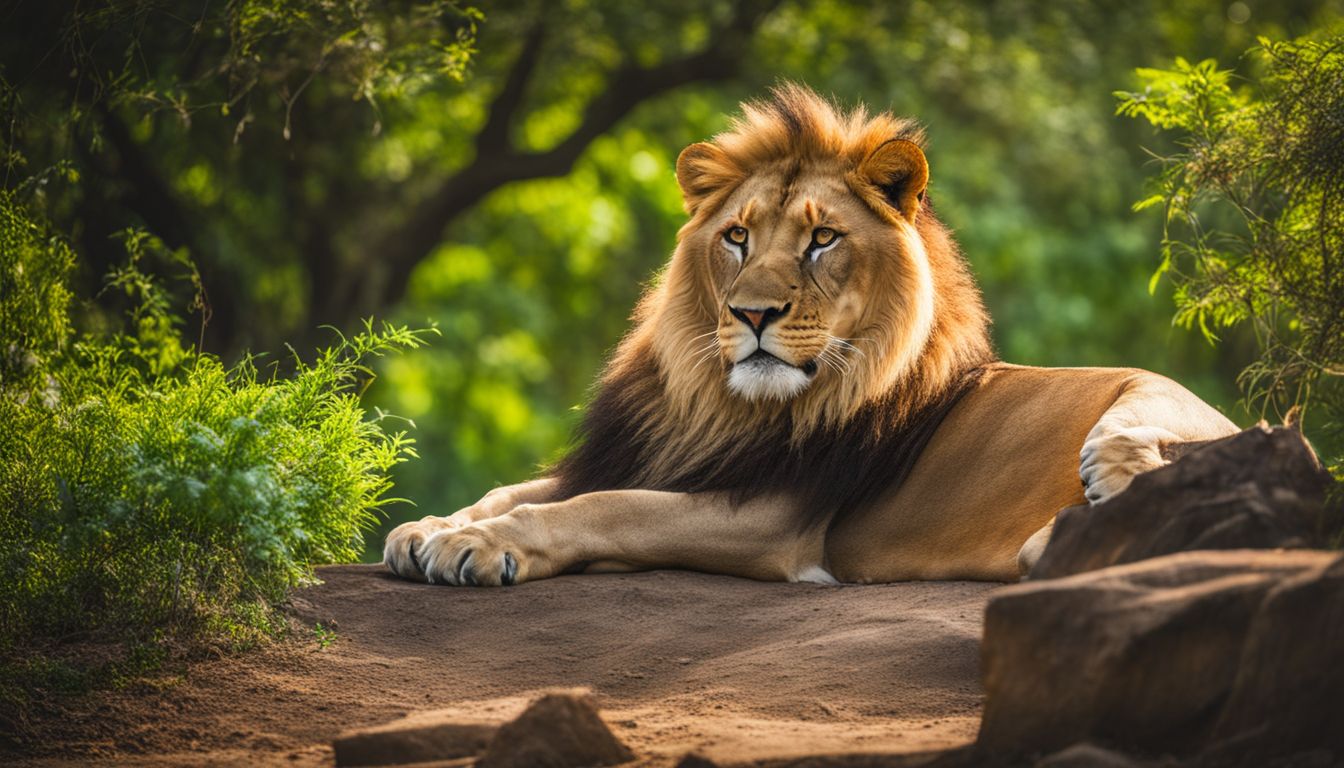
The Asiatic Lion, also known as Panthera leo persica, is native to the Gir Forest in Gujarat, India.
Native habitat and range
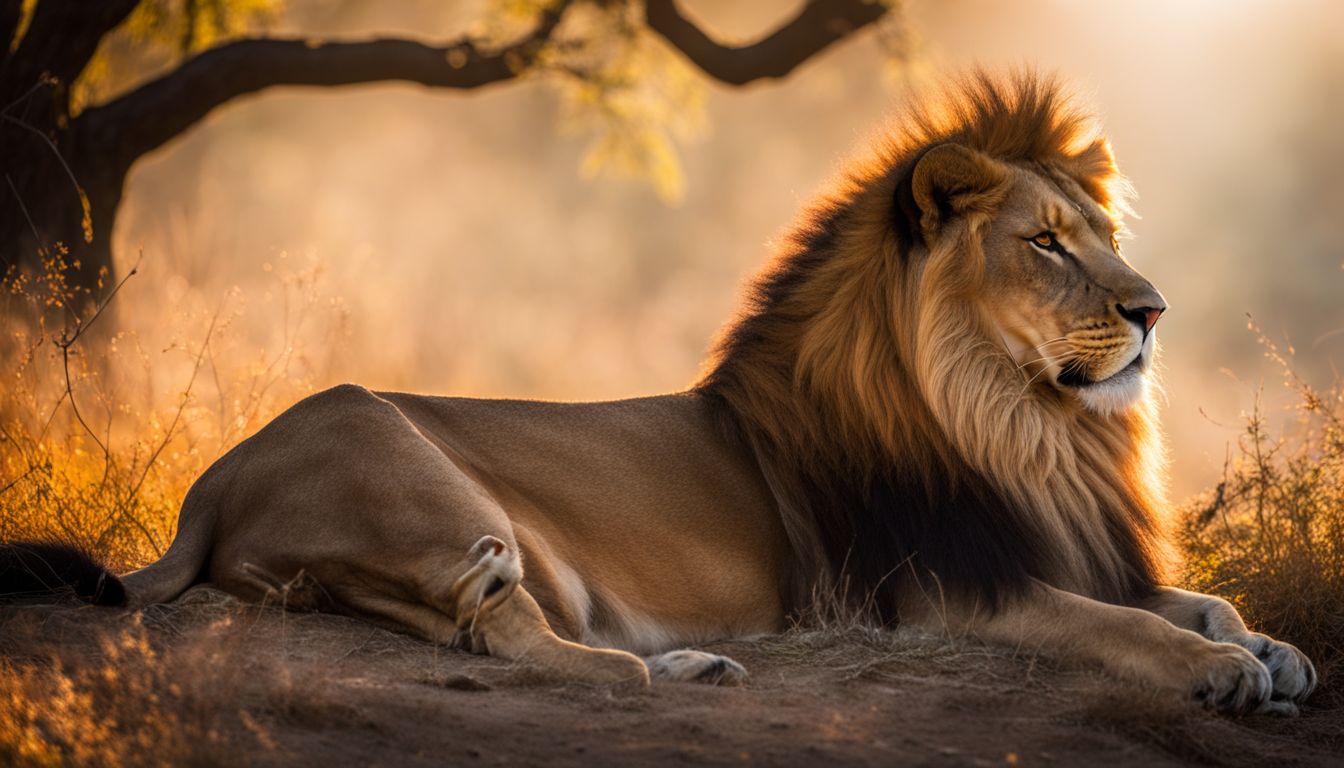
The Asiatic lion is native to the Gir Forest in India, which is located in the state of Gujarat. This forest reserve is its primary habitat and the only place in the world where wild Asiatic lions can be found.
In the past, these majestic creatures had a larger range, but now they are limited to the Gir National Park and surrounding areas.
Conservation efforts have been put into place to protect and preserve their habitat due to their dwindling population. The Gir Forest has been designated as a protected area, ensuring that these magnificent animals have a safe space to live and thrive.
It’s crucial to safeguard this habitat for future generations so that we can continue to admire and appreciate these incredible creatures.
Conservation efforts
Conserving the habitat of the Asiatic lion is a priority for wildlife conservation organizations and governments. Efforts are focused on protecting their native habitats and promoting coexistence with human populations.
In India, there are five protected areas dedicated to safeguarding the Asiatic lion, including the Gir Forest which has been converted into a forest, national park, and sanctuary. Conservation initiatives involve monitoring the population closely and implementing measures to increase their numbers and expand their habitat.
Local communities in and around the Gir Forest also play a crucial role in conservation efforts. They contribute by actively participating in programs aimed at preserving biodiversity and ensuring sustainable livelihoods.
These efforts include engaging in practices that minimize human-wildlife conflict, such as using eco-friendly agricultural techniques or establishing buffer zones between villages and lion habitats.
Overall, conservationists strive to preserve not only the Asiatic lions but also other species within their ecosystems. This involves creating awareness about the importance of biodiversity conservation among local communities as well as implementing strategies for habitat restoration and wildlife management.
When and Why Did the Asiatic Lion Become the National Animal of Singapore?
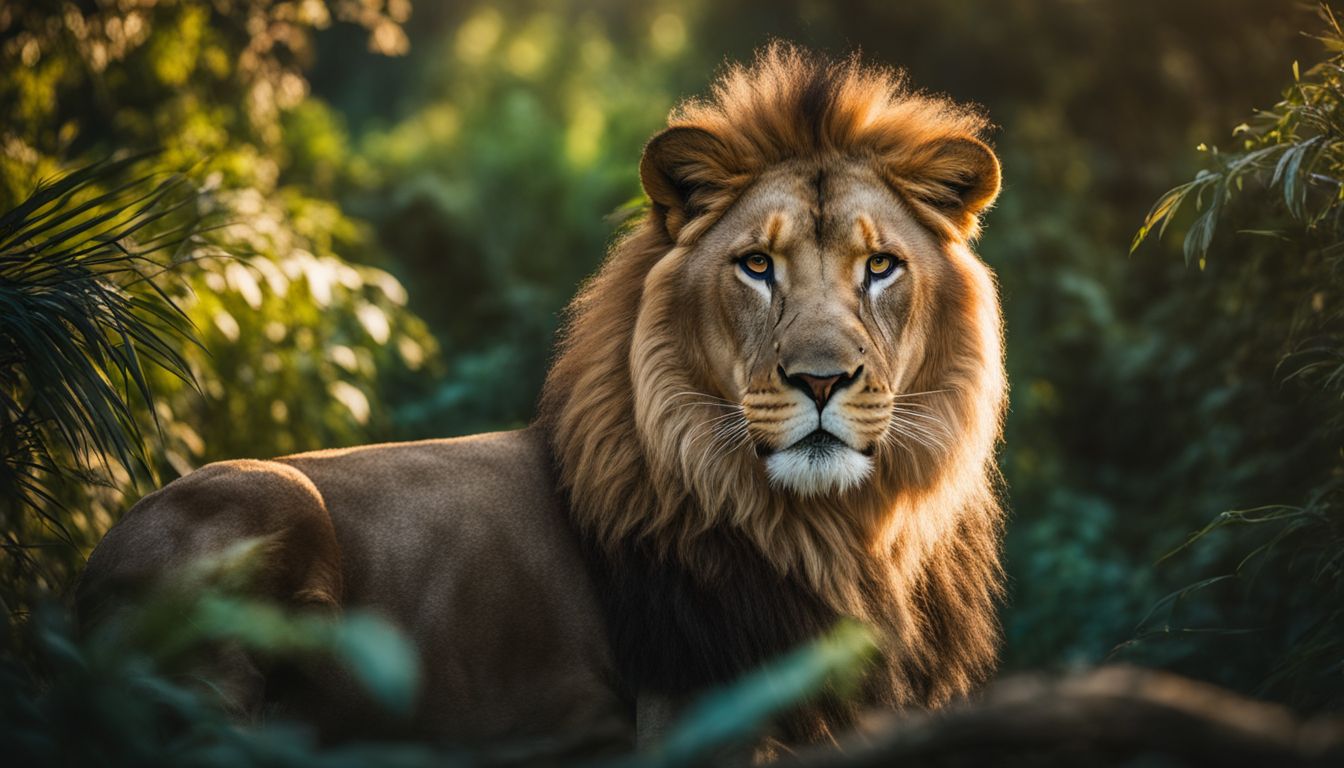
The decision to make the Asiatic Lion the national animal of Singapore was made to symbolize the courage, strength, and excellence that Singapore values.
Decision to make the lion the national animal
The decision to make the lion the national animal of Singapore was a significant one. It was based on the cultural fabric and pride of Singapore, even though lions are not found in the local fauna.
Lions represent courage, strength, excellence, kindness, generosity, and sociality – qualities that resonate with Singapore’s values. This symbol holds great importance in shaping Singapore’s identity and is seen as an emblem of national pride and heritage.
Despite their absence in Singapore, lions have long been present in India where the Asiatic Lion population resides.
Symbolizing the values of Singapore
The lion, as the national animal of Singapore, symbolizes the core values of the country. It represents courage, strength, and excellence that are deeply rooted in Singaporean culture.
The lion is seen as a powerful and fearless creature, reflecting the resilience and determination of the Singaporean people. It also embodies kindness, generosity, and sociality, highlighting the nation’s commitment to unity and harmony among its diverse population.
The lion’s symbolism goes beyond its physical characteristics; it signifies the qualities that Singapore strives to uphold in various aspects of its society.
The lion head symbol prominently showcases these values. Introduced in 1986, this iconic emblem is easily recognizable and widely used across official documents and national emblems.
It features a solid red-colored lion head against a white background on flags like State Crest or National Flag. By displaying this emblem with pride and following proper guidelines for usage, Singaporeans honor their shared values while representing their country’s identity to the world.
Where is the Asiatic Lion Featured in Singapore?
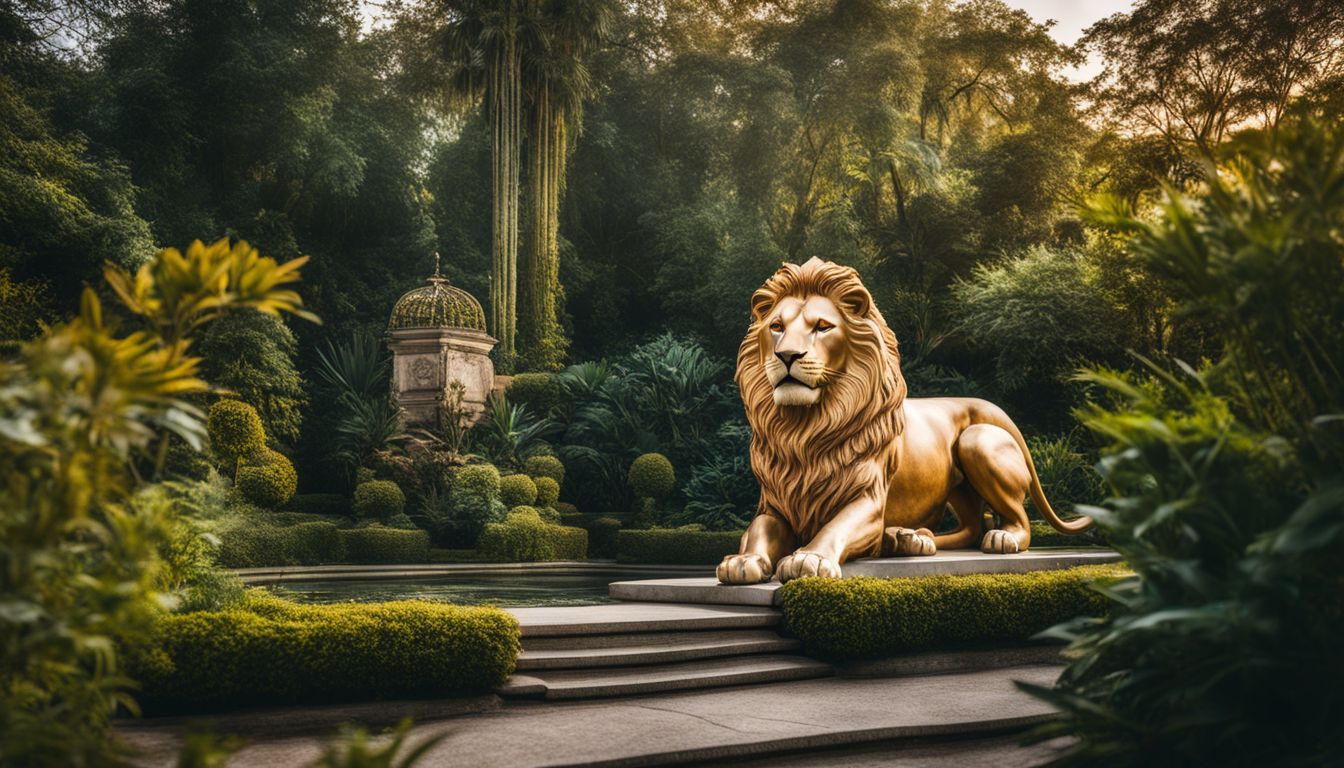
The Asiatic Lion is prominently featured in various forms of art, national emblems, and popular culture throughout Singapore.
In art and national emblems
The Asiatic lion is prominently featured in art and national emblems throughout Singapore. It holds a significant place in the country’s culture and identity. The lion head symbol, with its depiction of courage, strength, and excellence, can be seen on various official seals and flags of Singapore.
The emblem is represented by a solid red lion head against a white background, symbolizing the city-state’s values and heritage. This powerful image serves as a reminder of Singapore’s rich history and the pride its people have for their nation.
Additionally, the lion head motif can also be found in popular culture within Singapore, further emphasizing its importance to the country.
In addition to being depicted in art and symbols, the Asiatic lion holds historical significance in Singapore. It represents not only strength but also kindness, generosity, and sociality – values that are highly valued within the community.
Through various mediums such as paintings, sculptures, and digital designs, artists pay homage to this majestic creature while showcasing their talent to locals and visitors alike.
In popular culture
The Asiatic lion holds great significance in popular culture in Singapore. Its image can often be seen depicted on various forms of artwork, souvenirs, and even on the national emblem.
The lion is celebrated as a symbol of courage, strength, and excellence, embodying the values that Singaporeans hold dear. It is also associated with kindness, generosity, and sociality – qualities that are highly regarded in Singaporean society.
The presence of the Asiatic lion in popular culture serves as a constant reminder of these values and contributes to a sense of national pride among its people.
Additionally, the Asiatic lion’s representation can be found in popular cultural events and performances throughout Singapore. Lion dances are commonly performed during festive occasions such as Chinese New Year to bring good luck and prosperity for the upcoming year.
These vibrant displays showcase not only the unique cultural heritage of Singapore but also highlight the significance of lions in local traditions.
Interesting Facts about the Asiatic Lion
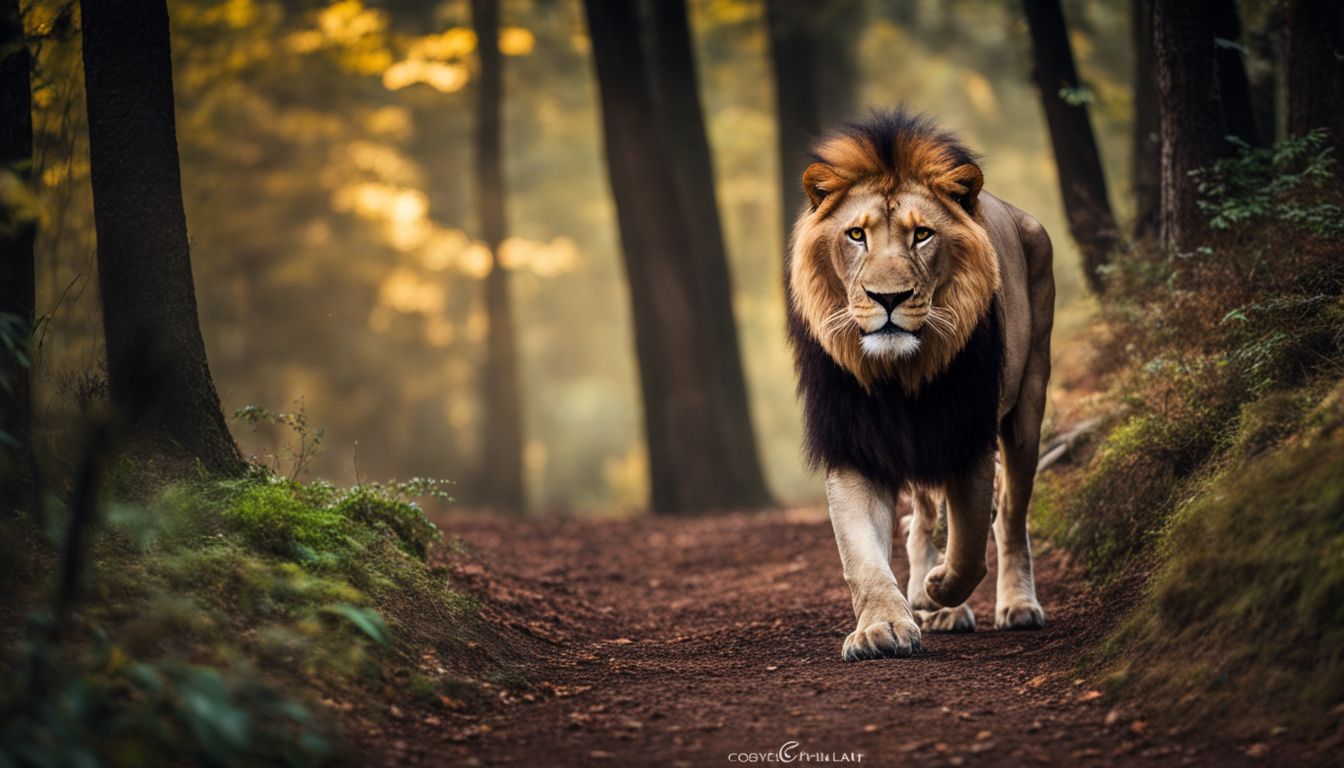
The Asiatic Lion has a rich history and mythology, with depictions of lions dating back to ancient civilizations such as Mesopotamia and Egypt.
Role in history and mythology
The Asiatic lion has played a significant role in history and mythology. In ancient Mesopotamia, this majestic animal was an important symbol and was depicted in various forms of art.
It held a special place in pre-literate Greek myth as well, where it is associated with the Labours of Hercules. The Nemean lion, which Hercules defeated as one of his challenges, is said to be the inspiration for these stories.
Its presence in both ancient history and mythology showcases the enduring fascination and admiration for this powerful creature throughout time.
Behavior and social structure
Asiatic lions exhibit interesting behavior and have a unique social structure. Male Asiatic lions are mostly solitary, although they may associate with up to three other males to form a loose pride.
These pairs of males often rest, hunt, and feed together, displaying marking behaviors during these activities. On the other hand, female Asiatic lions live in prides consisting of up to five females.
Males only associate with the pride during mating seasons. This social behavior helps ensure successful reproduction and protection for their young.
In addition to their group dynamics, Asiatic lions also have intriguing mating habits. Male lion alliances help them protect territories from rival males and increase their chances of reproducing with females in the pride.
Females have a hierarchical social structure within the pride, led by an alpha female who makes important decisions for the group. The cooperation among female lions is crucial for hunting as they work together to take down prey.
Other Beautiful Animals Native to Singapore
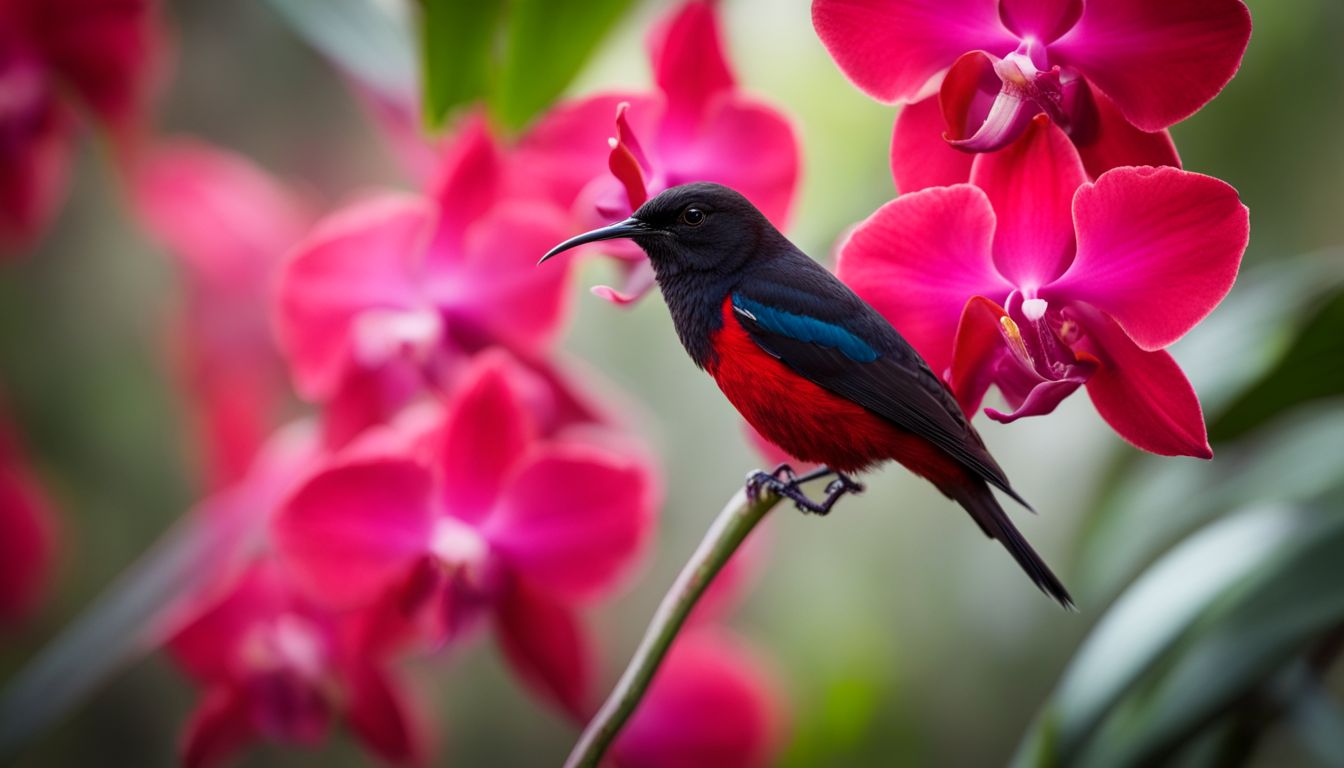
The Crimson Sunbird, Singapore’s national bird, is known for its vibrant crimson feathers.
The Crimson Sunbird: National Bird of Singapore
The Crimson Sunbird is a beautiful bird and it’s the unofficial national bird of Singapore. The females have olive-green backs and yellowish breasts, while the males are vibrant crimson red.
They have short wings that help them fly swiftly through the trees.
Although not officially recognized as the national bird, the Nature Society Singapore has announced that they consider the Crimson Sunbird to be Singapore’s national bird. It received many votes for its small size and stunning appearance.
The Hybrid Orchid: National Flower of Singapore
The national flower of Singapore is a beautiful orchid called the Vanda Miss Joaquim. It’s not just any ordinary orchid, though – it’s a hybrid! The Vanda Miss Joaquim was created by combining two different types of orchids: the Vanda Teres and the Vanda Hookeriana.
This special blend represents Singapore’s multicultural heritage and the harmony among its diverse ethnic groups. What makes this even more unique is that the Vanda Miss Joaquim was bred by Agnes Joaquim, a woman from Singapore.
As the national flower of Singapore, the Hybrid Orchid holds great significance in showcasing Singapore’s vibrant culture and natural beauty. It symbolizes unity, diversity, and resilience.
Conclusion
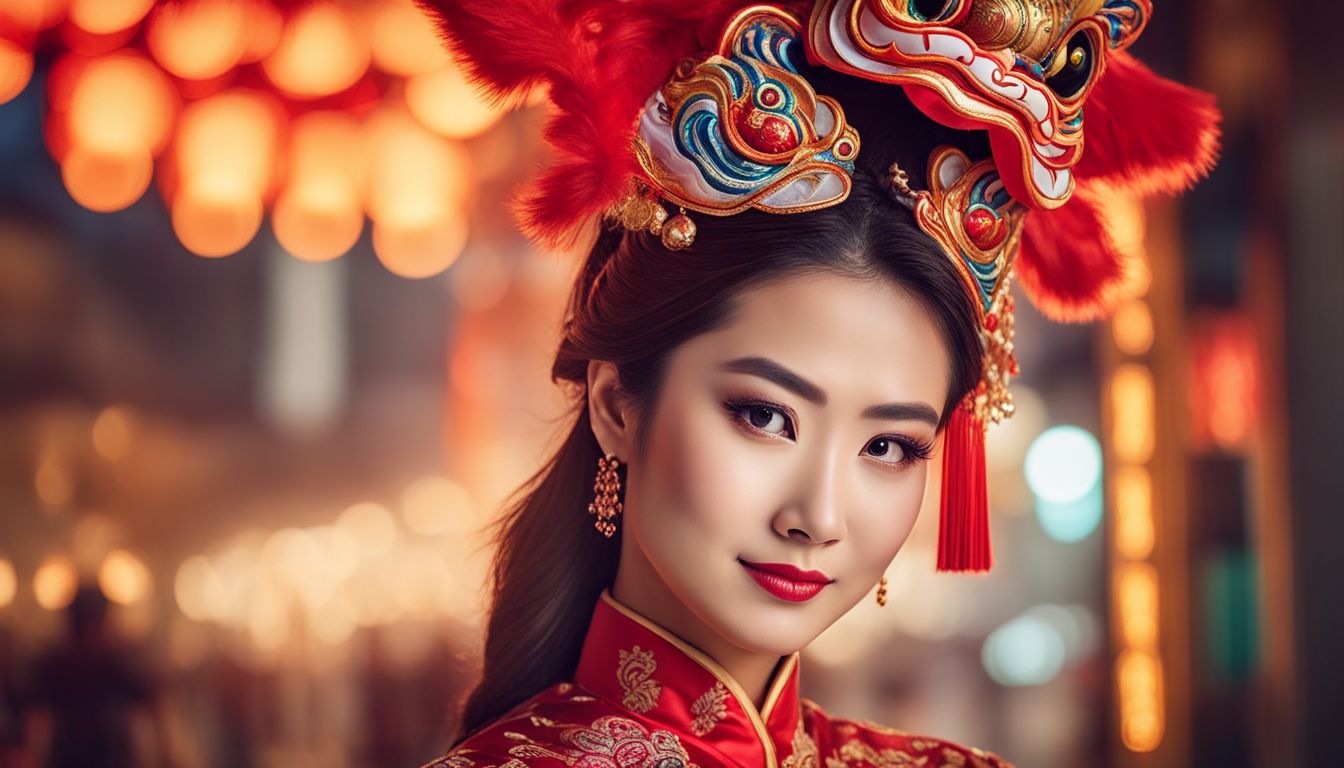
The Asiatic Lion holds great significance as the national animal of Singapore. Its representation in the Lion Head symbol embodies courage, strength, and excellence, qualities that reflect Singapore’s values.
As a symbol of resilience and pride, the Asiatic Lion showcases Singapore’s rich heritage and commitment to wildlife conservation. Embracing this majestic creature further strengthens the identity and pride of Lion City.
FAQs
1. What is the national animal of Singapore?
The national animal of Singapore is the Asiatic Lion.
2. Why was the Asiatic Lion chosen as Singapore’s national animal?
The Asiatic Lion was chosen as Singapore’s national animal because it symbolizes strength, courage, and pride, which are qualities that represent the country and its people.
3. Where can you find Asiatic Lions in Singapore?
Asiatic Lions are not naturally found in Singapore. They are native to India’s Gir Forest National Park and Wildlife Sanctuary.
4. Are there any conservation efforts for Asiatic Lions in Singapore?
While there are no wild populations of Asiatic Lions in Singapore, the government supports conservation efforts globally to protect this endangered species from extinction.
5. What does the representation of an Asian lion signify for Singaporeans?
The representation of an Asian lion signifies unity, resilience, and a shared identity among Singaporeans while celebrating their rich cultural heritage and history with a strong connection to nature.


